Problems with Container Gardening: How to fix various issues with container gardens?
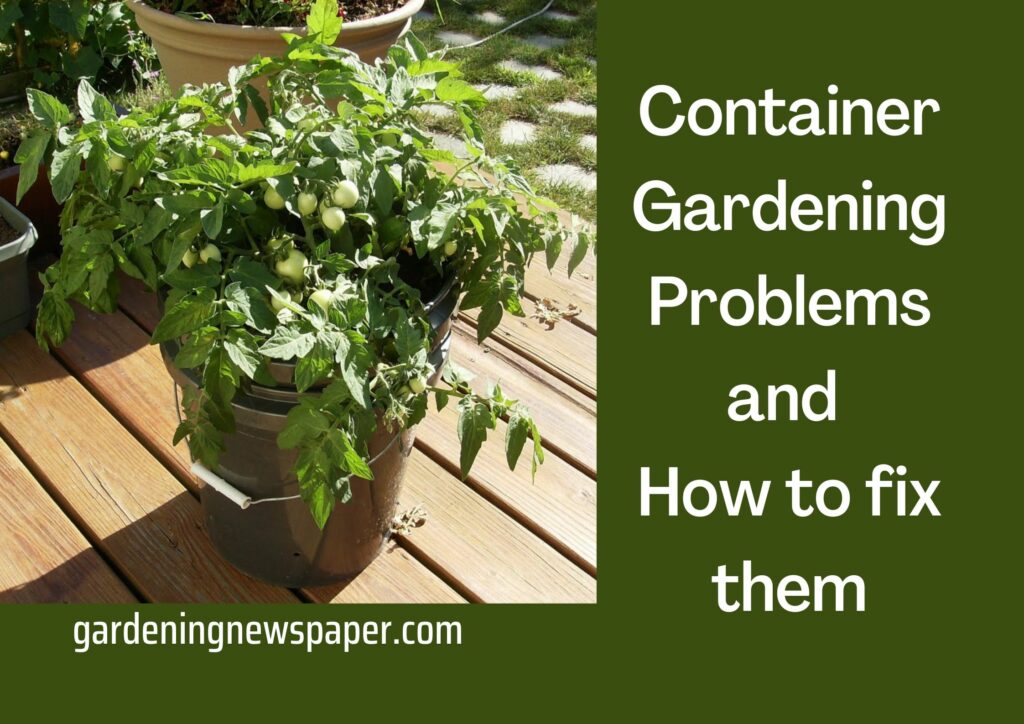
Container gardening, if done incorrectly, may cause you to lose most of your plants. Let’s discuss problems that you will encounter in container gardening and how you can overcome them so that you will become a successful gardener. In this article, we will discuss various issues like various tools that are useful in container gardening, water and soil maintenance, tips for maintaining a disease free container garden, challenges in container gardening, different diseases, and how to fix them. Happy reading and happy gardening to you!
Container Gardening Tools – Things to use for container gardening
Well, gardening is definitely a therapeutic experience. However, container gardening isn’t going to be a cakewalk! To make it easier to an extent, having the right kind of container gardening resources is a must. As a gardening lover, you might already have a basic understanding of different gardening tools, let us understand a few important tools that are especially useful for container gardening.
Planter Caddy
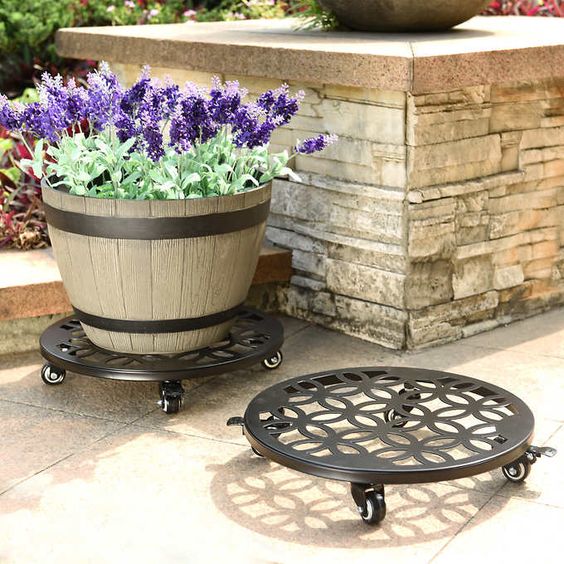
The planter caddy is a savior if you have heavy container plants. These planter caddies come with wheels underneath a circular or rectangular sturdy platform that allows you to place the plant pots on them and move across your home or garden.
Soil Moisture Metre

Due to lack of practice or experience, we usually tend to overwater or underwater the plants which may eventually lead to their death. You cannot kill a few plants for the practice of course! So we recommend that you buy yourself a soil moisture meter to save your plants from over-watering or under-watering. This little device will let you know the level of moisture in the soil, and you can water the plants accordingly.
Soil pH Metre
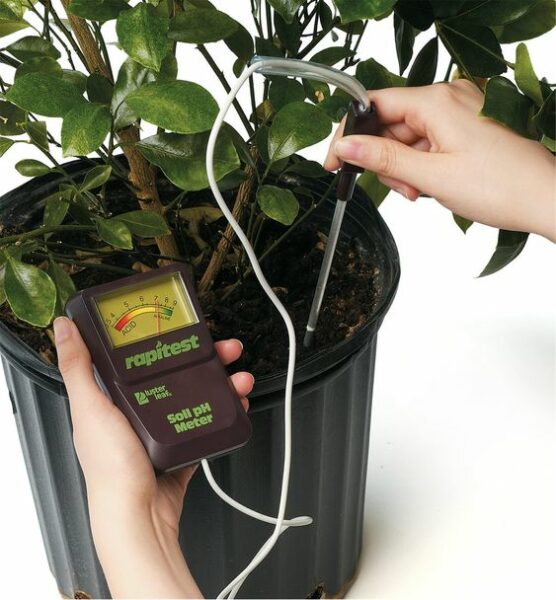
Do you know that there are acidic soil loving plants and alkaline soil loving plants? The pH of the soil determines the acidity or alkalinity of the soil. Okay if you think that’s too much science for you, let’s keep it simple. It is important to understand and maintain the pH levels of the soil to let the plants thrive. And a soil pH meter is the most important device to keep a check on it.
Self Watering Spikes
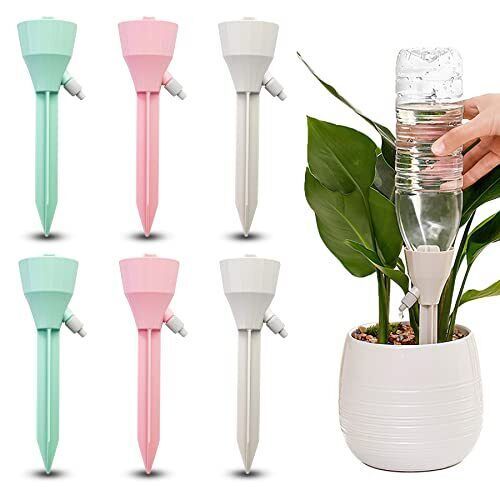
Ever wished for something that is more inexpensive than a fancy drip irrigation setup but something that works almost similarly? If you are someone who travels a lot or forgets to water your plants and feels sad about it later that your plants are wilting, these self-watering spikes are for you. You can use these spikes with a regular water bottle and place the bottle in your pots upside down.
Plant Labels
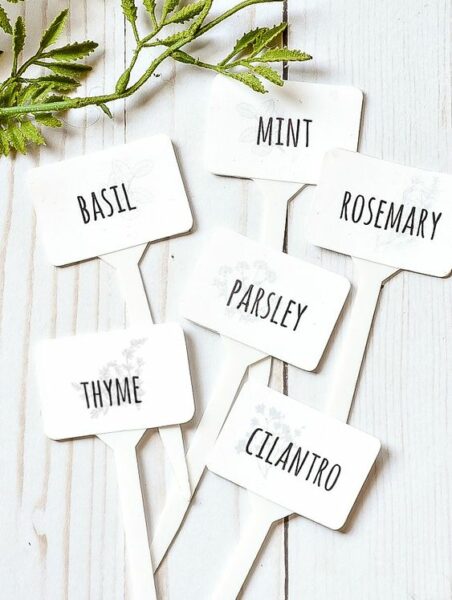
Plant labels? One of the most important tools for container gardening? Well, don’t you think it is cute for you to name your plants and watch them thrive? On a serious note, these plant labels are especially useful when you have different varieties of the same plant as they help you keep a check on your plants in the right way.
Water And Soil Maintenance – How to choose a container for growing plants?
While container gardening is extremely advantageous, maintaining the moisture levels in the different types of plants that you have in your garden is of course a challenge. In the section below, we will be looking into the most reliable and working tips for water and soil maintenance in your container garden.
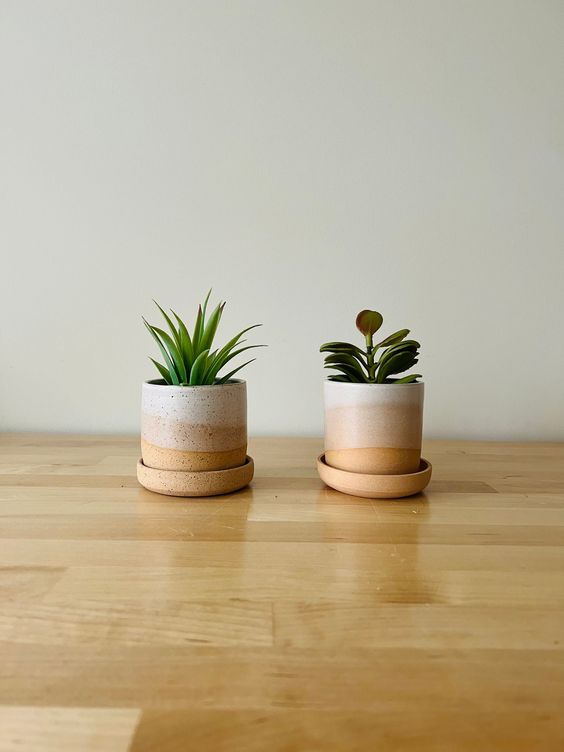
- Make sure to use coated ceramic containers or good quality plastic containers over terra cotta or coir baskets that can make your plants go dry quickly.
- Use a soil moisture meter at regular intervals to check for moisture levels. Or the easiest way is to test the soil with your finger by sticking it as deep as you can into the soil.
- Make sure that the soil in the containers is thoroughly watered. To check if you have done that right, see if the draining holes of the pot are getting rid of excess water.
- Do not drench the leaves with water. Make sure to water only the soil and not the foliage.
- In some cases, you might not notice that the water is over flown but the soil is not watered properly. Do not let the soil dry completely.
- Use the right soil and potting mix as per the plants’ requirements.
Challenges in Maintaining Container Gardening
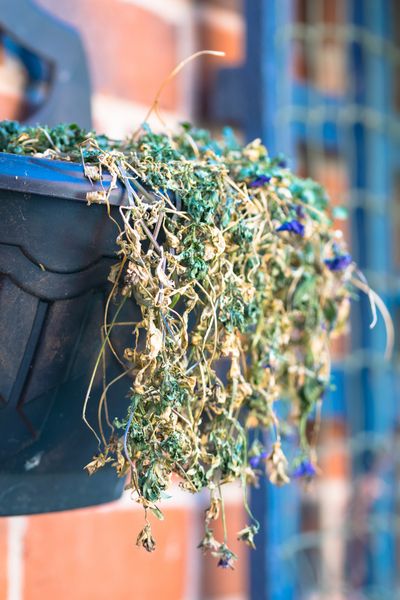
Challenges are everywhere. And your garden maintenance is definitely not an exception. In this section, we will look into some of the most common challenges in maintaining container gardening and ways to deal with them.
Plants wilt even if you provide them with enough water. Caused by Insufficient aeration and drainage
- Use a lighter and less compact soil mix.
- Increase more drainage holes in the pot.
- Use a soil with higher amount of organic matter.
Leaf edges burn or turn dry or brittle. Caused by High salt content.
- Leach the container with fresh water at regular intervals until the water drains from the drainage holes.
Plants appear spindly and unproductive. Caused by Too much nitrogen and Not enough light.
- Apply fertilizer at least once a week or less often and allow the water to drain from the drainage holes.
- Relocate your plants to an area where they can receive more light.
Plants are yellowing from the bottom and leaves lack vigor and color. Caused by Soil not being fertile enough and too much water.
- Use fertilizers that contain a lot of nutrients.
- Waterless and check for good drainage
Plants have spots or powdery, rusty, and many old dead leaves. Caused by Low phosphate levels and Grown at a temperature that is too low.
- Use fertilizers with a higher amount of phosphate.
- Move your plants to a warmer area.
Best Practices for Disease Free Container Gardens
One of the most neglected container gardening mistakes is, we tend to overlook little things like cleanliness, proper watering, plants’ exposure to light, etc. In this section, we will discuss some of the most important and common container gardening practices that we need to follow for a disease-free container garden.
Maintain the health of your plants
In the case of container gardening, bear in mind that you need to pay attention to the amount of sunlight, the right quantities of fertilizers, and proper watering. Make sure that you are not under watering or over watering the plants.
Burn the infected plants
Find the infected plants in your garden and get rid of them so that they do not contaminate other healthy plants. Make sure to burn them a little away from your garden.
Do not reuse the potting mix
Do not reuse the potting mix if you do not want diseases in your container garden. This is especially important when the used potting is in contact with disease causing elements like fungus, viruses, etc.
Clean the containers
Make sure to clean the containers thoroughly before planting something in them. Also, it is important to scrape off the lumps of soil and algae, etc. formed due to excess moisture around the containers.
Choose healthy plants when buying
Let’s get back to what’s been taught in the school. Prevention is definitely better than cure! This is true especially when it comes to container gardening. Make sure to pick healthy and disease free plants while buying them.
Clean the garden area at regular intervals
Cleaning the containers and planting healthy plants isn’t the end of your job. It is extremely important to clean the garden at regular intervals to avoid water stagnation and attracting diseases.
Diseases Common in Container Garden Plants
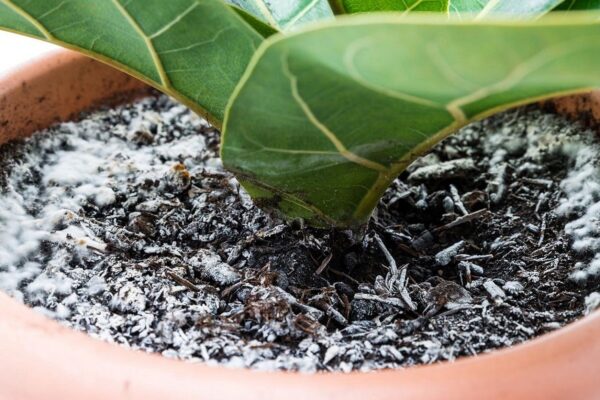
Container gardening plants are also prone to diseases. This section will discuss the common diseases that affect container garden plants.
Aster yellows
- Caused by Phytoplasma (a bacteria), aster yellows cause stunting of leaves and the appearance of yellow-green foliage. This type of disease is carried by insects like leaf hoppers thus the disease is spread when insects feed on plants.
- Destroy the infected plant by uprooting and burning it. The application of insecticides also helps.
Alternaria
- Alternaria is a fungal attack common among Calendulas. It causes small red to purple spots that enlarge over time. The spotted leaves eventually turn yellow and drop. The fungal disease is common during the rainy season as fungi require moisture to spore.
- Practice good sanitation within your garden. Moreover, boost the immune system of your plants by feeding with the right fertilizers.
Anthracnose
- Anthracnose is another type of fungal infection that causes brown spots on the host plant. The spots can kill the entire leaf if left untreated.
- The fungus is prolific in environments that are cool and with a lot of moisture thus growing plants in the sun is a great idea to treat container garden plants from anthracnose. You can also remove the affected part provided that you incinerate it to kill the fungus.
Botrytis
- Also called Gray Mold, Botrytis is common among tulips and bromeliads. It eventually kills the plants as this is an invasive form of the pathogen for any kind of plant.
- Implement proper sanitation within your container garden.
- Make sure that the leaves do not collect moisture to deter the development of Botrytis.
Powdery Mildew
- The white and powdery growth often affects the leaves, young stems as well as flowers.
- Make sure that your container plants get proper air circulation to avoid humidity which encourages the growth of powdery mildew. Avoid placing plants that are susceptible to mildew in shaded areas. Also, practice good sanitation practices by removing dead and diseased leaves from the plant.
Root rot
- Root rot is caused by fungi Pythium and Phytophthora that attach to the base and roots of the plant causing rot. Plants are infected by contaminated soil, water, and tools.
- Ensure that the soil drains well. Also, avoid overwatering your plants.
Sooty mold
- Sooty mold is caused by a fungus that is often introduced by the plant from the honeydew excreted by insects like scales and aphids. This particular fungal infection kills the foliage by reducing the access of chlorophyll to light which eventually kills the entire plant.
- Eliminate the presence of scales or aphids by applying fungicide.
Fusarium wilt
- Plants infected by Fusarium will show signs of poor health through wilting. The plant then turns yellow, followed by browning, and eventually dies.
- If the plant shows early signs of wilting, avoid overwatering the plant. If the disease has progressed, uproot the plant and burn the affected plant to prevent the spread of the disease. Do not plant anything on the pot to naturally kill the bacteria as they no longer have food to sustain them.
Aphids
- Aphids are insects that have sucking mouth parts and they can cause puckering or distortion on the plant tissue. Aphids are also vectors of different viral diseases in plants.
- Introduce natural insect predators in your gardens such as ladybugs, lacewings, and parasitic wasps.
Mealybugs
- Mealybugs are insects that are common in container gardens. Their population balloon out of proportion and they inflict damage to the plant while feeding.
- Manually wash off mealy bugs from the plant by brushing them off or using a Q-tip rubbed in alcohol. Unfortunately, the waxy substance on the exoskeleton of mealy bugs makes them highly difficult to kill using pesticides.
White fly infestation
- Severe infestation of white flies can cause mottling as well as yellowing of the leaves thus lowering the yields of your plant. This is a great concern for those who do vegetable container gardening.
- Use a pesticide that is specific to white flies.
Container gardening is a fun and therapeutic activity that everyone can do. It does not limit your ability to grow many things despite the lack of space in your area. The best thing about container gardening is that it is one of the simplest types of gardening that you can do and all there is to get planting materials, some garden tools, a lot of passion for growing those beautiful beings, and watching them thrive!
